Mazda CX-5 Vs Nissan Rogue Comparison: Heart and Head

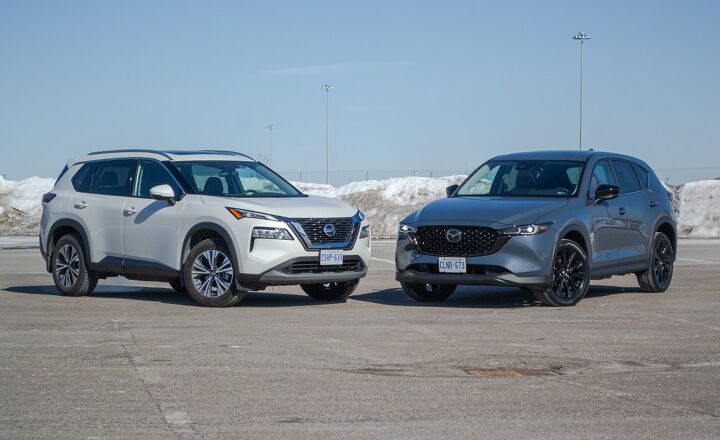
As much as we sometimes like to think the compact crossover landscape is all the same, the Mazda CX-5 and Nissan Rogue are about as different as the breed gets.
Mazda refreshed the CX-5 for 2022, tweaking its styling and upping its technology quotient. What hasn’t changed is the driver appeal, the kernel of Miata-ness that permeates every touchpoint. Making the inevitable switch to a crossover, but need something that still reminds you driving can be fun? Mazda’s got that on lock.
Get a Quote on a New Mazda CX-5 or Nissan RogueThe Nissan Rogue has its own approach. Redone for 2021 (and with a new engine for 2022), the Rogue is a four-wheeled fixer, here to smooth over any of the myriad little bumps of daily life. If people aren’t buying the best tools for the job— yep, it’s still minivans—then adapting what they are buying to better suit them is an approach we understand.
Which one is more deserving of your hard-earned? Managing editor Mike Schlee and I put them through a week of work to find out.
Interior and Cargo Space

CX-5: No other mainstream automaker does classy quite like Mazda. The refreshed CX-5 doesn’t hit the same minimalist high notes as its younger CX-30 sibling, but it’s still one of the nicest cabins in the class. Every bit you touch feels upmarket, and the red leather and contrast stitching adds a welcome dash of spice. The primary climate controls are all easy to reach, though if we’re nitpicking, we’d prefer them a little higher up and in clearer view. The heated steering wheel button in particular is almost tucked away.
Sliding behind the steering wheel, the Mazda’s seats are supportive, a stiffer cushion the first hint that, even as a crossover, this is still the driver’s choice of this pair. It’s easy to set the right driver position, with clear sightlines ahead and behind.

According to manufacturer-provided measurements, the CX-5 is the more spacious of the two, losing out only on front legroom (41.0 inches / 1,041 millimeters) and second-row shoulder room (54.8 inches / 1,392 mm). Front and rear headroom come up as 39.3 and 39.0 inches (998 and 991 mm), respectively. The CX-5 boasts a particularly impressive 39.6 inches (1,006 mm) of rear legroom. In practice, it feels the more cramped of the two, with a sizeable central hump for the drivetrain, smaller windows, and the lack of a panoramic moonroof keeping it dark.

The CX-5 also has less storage space, both within the cabin and out in the trunk. There’s an even 30 cubic feet (850 liters) of storage behind the rear seats, nearly doubling to 59.3 cubes (1,679 L) with them folded flat.

Rogue: Okay, the Mazda might be sportier, but does it have a flat-bottomed steering wheel? Thought so.
The Rogue’s ’80s-style wheel design aside, the interior is a safer, more conservative space. The two-tone brown and black leatherette is subtle; the ugly plastic shutlines where the larger infotainment screen goes, not so much. The wood-like texture on the center console is certainly better than piano black, too. The Rogue has taken a serious step up in quality since the fleet-favorite last generation. We like the larger space for climate controls, too.
Seating comfort is the Rogue’s strength, with big, squishy thrones just made for road trips. They won’t hold you in place like the ones in the CX-5, but they’re just as adjustable, so you can find the right position without a fuss. The Rogue’s boxier shape and added glass surface area makes it easier to see out of, as well.

According to the numbers, the Rogue has 39.2 inches (996 mm) of front headroom and 37.8 (960 mm) in the back. Hopping between the Nissan and Mazda, the Rogue doesn’t feel cramped in the back; in fact, that big moonroof makes it feel more spacious. Similarly, legroom measurements are 43.3 and 38.5 inches (1,100 and 978 mm), respectively, but the nearly flat floor gives passengers more wiggle room.

The Nissan makes use of its extra three inches in length in the cargo area. It offers buyers 36.3 cubic feet (1,028 L) of wide and flat storage space, and that balloons out to a massive 72.9 cubic feet (2,064 L) with the seats folded flat. On that note: when the front seats were adjusted for my 5’10” frame, the rear seats still easily folded down. The Mazda’s brushed the backs of the front seats. Doing an Ikea run was an easier affair in the Nissan.
SEE ALSO: Hyundai Tucson Hybrid vs Toyota RAV4 Hybrid Comparison: Fuel-Sipping Family HaulersBottom Line: Both crossovers feature wide-opening rear doors, so getting kids in and out of their seats should be easy. The Rogue is more spacious, and while it hasn’t quite caught up to the Mazda’s quality, the gap isn’t nearly as big as you’d think. If every inch counts, go Nissan; the numbers are misleading. If interior ambiance is more important, the Mazda’s the choice here.
Tech and Features

CX-5: Mazda’s 10.25-inch infotainment screen is the largest standard screen in the class. That’s a slightly misleading figure though, as the ultra-widescreen layout is quite short. Then there’s the contentious issue of it not being a touchscreen.
I’ve said it before, and I’ll say it again: Mazda’s reasoning, that touchscreens are inherently more distracting, has weight to it. For my particular uses, the BMW-like center console rotary dial does most of what I need without issue, though it’s a pain in the (wired) Apple CarPlay menus. But it’s arguably more distracting trying to make sense of the radio controls. A touchscreen is also more approachable for whomever is riding shotgun. It doesn’t help that the system responses are also a little pokey.
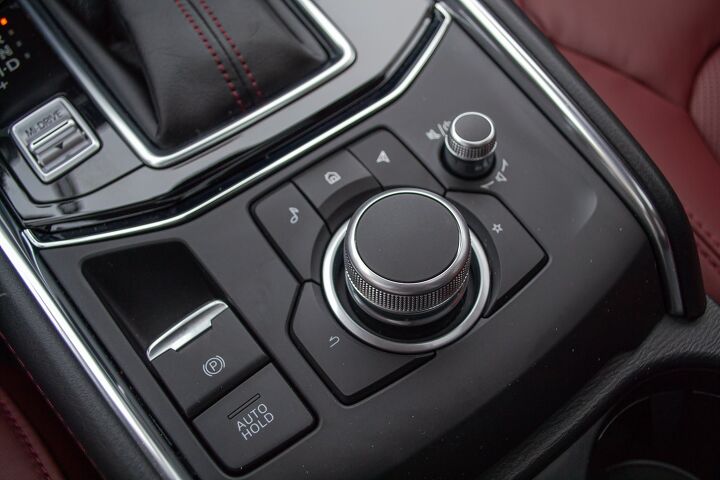
The rest of the CX-5 package is better. Both cars feature six-speaker sound systems, but I preferred the cleaner sound in the Mazda. The CX-5 includes power adjustability for both front seats: 10 ways for the driver, and six for the passenger. There’s also a driver seat memory feature, a rarity at this price point. A power liftgate with height selection is included on the Carbon/Kuro trim, as well. There are four USB ports peppered throughout the cabin; the rear two are part of the flip-out armrest. That keeps things tidy, but means back-row folks can’t charge if they’re riding three-up.
Mazda includes a long list of standard safety systems on every CX-5, enough for it to earn a Top Safety Pick+ rating from the Insurance Institute for Highway Safety (IIHS). This tester features automated emergency braking, adaptive cruise control with stop-and-go functionality, auto high beams, lane departure warning, lane keep assist, and pedestrian detection. It all works well. The backup camera is in need of an update though: it’s low-res, with static guide lines, and an odd angle.

Rogue: No, despite those surrounding shutlines, the Rogue’s 8.0-inch touchscreen doesn’t drop into the dashboard. They’re just there to remind you that you didn’t opt for the larger one.
In all seriousness, the Rogue’s tech suite aligns with the rest of the package: no frills, straightforward stuff that just plain works. The infotainment system isn’t pretty, but it’s responsive and easy to read. Plus, there are actual physical buttons and dials. Apple CarPlay and Android Auto are both present here too; like the Mazda, they’re wired, and there’s no wireless charge pad. The fiddly buttons at the base of screen might be a little small, but in every other way, the Nissan’s system is the superior one.

Like the CX-5, the Rogue has a power liftgate. It does without a power-adjustable passenger seat or auto-dimming mirror, however—minor inconveniences more than made up for with the 360-degree camera. It’s not that the Rogue is especially hard to park, but that extra set of eyes, especially in tight underground parking, is key.
Nissan continues that momentum with a robust driver assistance suite. The Rogue matches the CX-5 with adaptive cruise control, rear cross-traffic alert, blind spot monitoring and avoidance, auto high beams, lane centering, lane departure alert, and automated emergency braking. It even throws in a driver attention alert. No wonder the Rogue also earns a Top Safety Pick+ rating from the IIHS.
SEE ALSO: 2020 Ford Escape Hybrid vs 2020 Toyota RAV4 HybridBottom Line: No two ways about it: the Nissan clinches this category. It’s better equipped and features a lower learning curve.
Powertrain, Driving Feel, and Fuel Economy

CX-5: Mazda’s reputation as the driver’s choice is clear from the first turn of the CX-5’s steering wheel. It has a weight to it that is unique in the class. “CX5 has heavy steering, something some drivers may find tiresome,” says Mike, “but I love.” I’m with him: the CX-5’s helm inspires confidence, with a clearer sign of what’s happening down at surface level.
You might assume the CX-5 is the stiffer ride—and you’d be right. It’s hardly a call-the-chiropractor affair, though: there’s a little more agitation over rough surfaces. The CX-5 has excellent damping, so it quickly resettles after larger bumps, never veering from its intended path. Again, confidence.

The 2.5-liter is a smoother unit than the same-displacement one under behind the V-Motion grille. It’s barely more powerful—187 hp and 186 lb-ft—but it feels more urgent thanks to sharp throttle tuning and a smooth six-speed automatic.
Only having six forward gears does cost the Mazda at the pumps. The EPA rates it at 24 mpg city, 30 mpg highway, and 26 mpg combined. (Canadian figures are 9.9, 7.9, and 9.0 L/100 km, respectively.) To its credit, the Mazda was almost bang-on that combined figure.

Rogue: Due to the ongoing chip shortage, a 2022 Rogue was unavailable for this test. That means this 2021 model uses the outgoing 2.5-liter naturally aspirated four-cylinder, an engine gone from the lineup for 2022 (other than the basic Rogue S in Canada). It’s … fine, with 181 horsepower and 181 lb-ft of torque routed through a CVT. I’ve driven the new engine, a muscular 1.5-liter turbo three-pot with 201 hp and 225 lb-ft. Whereas the 2.5 can occasionally feel out of breath on on-ramps, the 1.5 makes progress much easier. It also minimizes the CVT drone that this Rogue is guilty of.
What hasn’t changed between the years is the suspension tuning. Nissan has clearly prioritized comfort over handling, as the Rogue smoothes over bumps big and small. It’s not that it feels wallowy, because the Rogue is predictable and controlled. It just lacks any interest in taking the long way home. Steering effort is practically nonexistent, and while there are selectable drive modes, it feels most natural in the regular mode.

Even with the old engine, the Rogue is the more fuel efficient model in this pair. Its official figures are 25 mpg city and 32 mpg highway, for a 28 mpg combined figure. (Canadian figures are 9.2, 7.2, and 8.3 L/100 km, respectively.) The 2022 model bumps all those EPA numbers up by 3 mpg (8.4, 6.7, and 7.6 L/100 km). Those are class-leading numbers, though our snow-heavy week saw the Rogue hovering closer to 26 mpg (9.0 L/100 km).

Bottom Line: As easily as the Rogue won the last category, this is all about the CX-5. It gives up little comfort for a much more interesting drive. It also has the better engine—not something we’re confident we could say if the Rogue was packing the new 1.5-liter, though.
Styling

CX-5: The CX-5 is certainly the more car-like of these two, a pleasant design of soft curves and sharp details. The 2022 refresh does little to change that, with a reprofiled front bumper and squintier headlights. The revised LED signatures front and back pull inspiration from the upcoming CX-50. Unlike that model, the CX-5 keeps the plastic cladding to a minimum. While we appreciate the Carbon/Kuro blackout treatment for the grille, it makes the 19-inch wheels look like winter beaters.

Rogue: The Rogue is very clearly a modern Nissan, with the V-Motion grille and squished, stacked headlight treatment. There’s an evolutionary approach, here, one that keeps the design safe. The blacked-out A-pillar and pinched look from the angular side skirts are the strongest parts of the design, to these eyes. The Rogue clearly telegraphs that it’s the more capacious load-lugger of this pair.
Bottom Line: Which one of these appeals more to you likely has to do with how much you miss driving an actual car.
SEE ALSO: Toyota RAV4 vs Nissan Rogue ComparisonPricing and Value

CX-5: Our Polymetal Grey tester slots right into the middle of the naturally-aspirated CX-5 lineup, with an as-tested sticker of $32,395 ($40,418 CAD). In Canada, it’s the Kuro Edition; south of the border, it’s the Carbon.
At the low end, the CX-5 starts from $27,125 ($32,150 CAD), which is on the higher side for the class. However, that includes standard AWD, which is typically an option on competitors. On the other end of the spectrum is the $39,875 ($45,300 CAD) Signature trim. That’s a lot of cash, but it includes the turbocharged motor, one with the most power and torque in the class.

Rogue: As equipped, our MY2021 Rogue SV tester rang in at $33,420 ($38,628 CAD), including destination. However, the 2022 model swaps in the afore-mentioned turbo engine, so this nat-asp setup is no longer available. Nonetheless, the rest of the package is the same, so the slight price hike to $34,170 ($39,728 CAD) still represents good value. You’re not going to find this level of space and standard safety kit in the class for this price. The added niceties of the Premium upgrade—leatherette seating, heated front (and rear, in Canada) seats, rear sunshades, the power tailgate, and enlarged sunroof make it hard to justify moving to a higher trim.
2022 pricing begins with the front-drive Rogue S, at $27,925 including destination. Canadian pricing is $33,128 CAD, and up north, the base trim continues on with last year’s 2.5-liter engine. From the SV up it’s all turbo, all the time, right through to the $39,205 ($43,828 CAD) Platinum AWD model. Adding AWD is a $1,500 ($2,300 CAD) surcharge on all trims (every trim other than S is standard AWD in Canada.)
Bottom Line: The value proposition is quite different depending on your market. In America, the Mazda is about $1,000 more affordable. In Canada, the gap is nearly double that, in the Nissan’s favor. Considering all the extra kit the Nissan comes with, we’re calling it for the Rogue here.
SEE ALSO: Kia Sorento vs Honda Pilot Comparison: Three-Row ThrowdownVerdict: Mazda CX-5 vs Nissan Rogue Comparison

So which of these crossovers is the loser in this comparison? Neither. We try to avoid ties here at AutoGuide, but in this case it was the only option that felt right. Despite being third and fourth on the sales charts, the Rogue and CX-5 are two very different packages for the compact crossover buyer.
The Rogue is more family-oriented, all ease of use and frictionless experience. It’s a tool, but one that’s been refined to excellence. The amount of content offered in this model, just one trim up from base, is unparalleled. It’s the more comfortable option, too.
For our own personal use, both Mike and I preferred the CX-5. It isn’t as well equipped, but it impresses behind the wheel. “CX-5 is still the driver’s choice,” explains Mike. He adds, “the compact crossover for those who must get a small, mainstream crossover. Maybe they’ve matured but are still an enthusiast at heart.”
Both excel at their particular focus in the segment. Be honest about what you want from a compact crossover, and you can’t go wrong with either.
Become an AutoGuide insider. Get the latest from the automotive world first by subscribing to our newsletter here.

Kyle began his automotive obsession before he even started school, courtesy of a remote control Porsche and various LEGO sets. He later studied advertising and graphic design at Humber College, which led him to writing about cars (both real and digital). He is now a proud member of the Automobile Journalists Association of Canada (AJAC), where he was the Journalist of the Year runner-up for 2021.
More by Kyle Patrick

















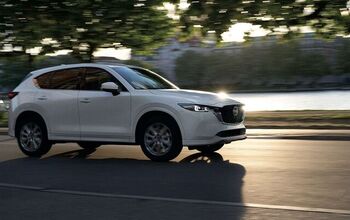







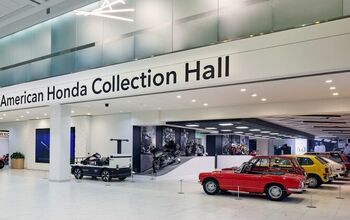

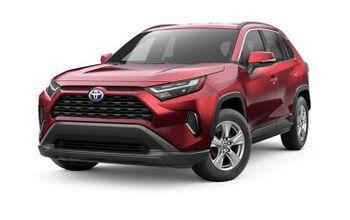



Comments
Join the conversation
Hey. What is a Nissan Rouge? Do you NOT mean ROGUE? A little bit of Proof reading DOES go a long way ;)
I've never been a Mazda fan, but this detail comparison, including the side by side, has convinced me that the brand has what it takes to compete beyond it's assigned catagories, especially in style and design, the latter of which, with minor tweeks, has been enduring.